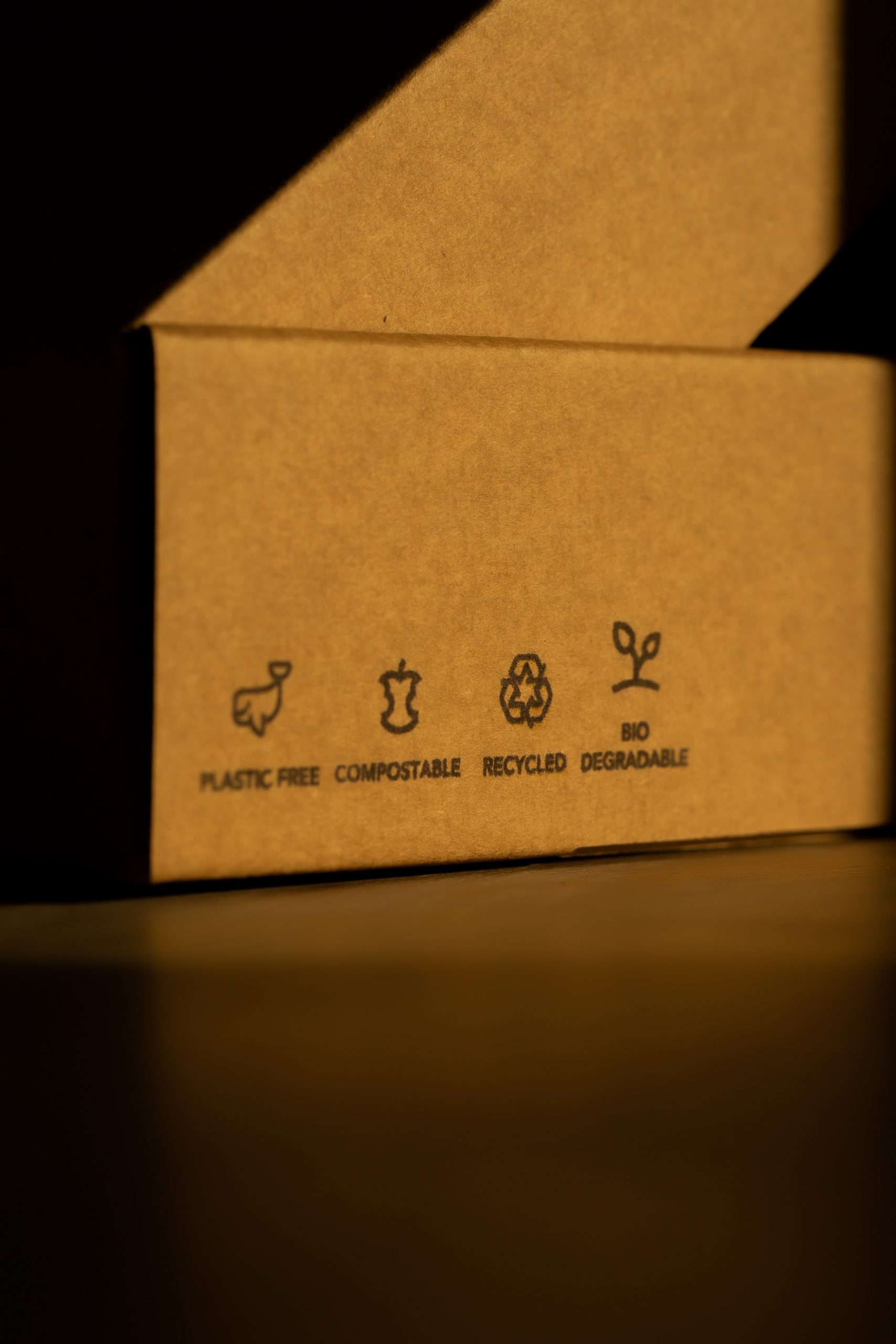By Alyssa Harben, Phd
As people become more aware of climate change and plastic pollution, businesses of all sizes are trying to be more sustainable. But if you’re a small business, it can be tough to figure out where to start.
Small businesses usually often have no budget for researching and developing new packaging materials. That’s why I suggest knowing the basic qualities of the packaging you already use and what recycling options are available to your customers. There’s no one-size-fits-all sustainable packaging solution that will work for all products and situations, so you need to think about your product and how you distribute it to determine what makes the most sense for your business.
Material Attributes to Consider
Packaging can be made out of many different materials, but the most common materials in the US are paper and paperboard, corrugated cardboard, plastics, glass, steel, aluminum, and wood. The best material for your packaging depends on your product, how it’s used, and where it’s sold. A package that reduces product waste generally has a lower carbon footprint than packaging that’s more minimal but leads to more waste from the product.
If you are interested in evaluating the sustainability of the packaging you are using for your business, ask the following questions:
- Is the design of the packaging efficient and uses as little material as possible?
- Can you cut down on unnecessary packaging by changing procedures, like using custom-sized cushioned mailers instead of boxes?
Using less material is better than using more material, as long as everything else about the packaging is still effective.
- Is the material made from renewable or non-renewable resources? For example, paper is renewable, while glass and metal are not.
- Is the material made from recycled materials? For example, using recycled plastic is better than using new plastic.
If all other qualities are equal, it’s better to use a renewable material over a non-renewable one, or recycled material over something brand new. Packaging with some recycled material is always better than using no recycled material, even if it’s not 100% recycled.
- Is the material recyclable?
- When you think about recyclability, consider the technical ability to recycle material, as well as the infrastructure in place to collect, sort, and sell the material to companies that can turn it into new products.
- The Recycling Partnership’s Circular Packaging Assessment is a great tool to help determine the recyclability of a product.
It is always better to choose packaging that is widely collected for recycling.
- Is the material compostable?
- If you are selling a food product, compostable packaging could be a good fit. If your product is not food, compostability might be less important than recyclability or reusability.
- Check out the Sustainable Packaging Coalition’s guide on Ensuring the Success of Compostable Packaging to help with determining whether your product is a good fit for compostable packaging and how to overcome any barriers you may face.
It’s better for food waste to be in compostable packaging and collected for composting rather than for it to be sent to a landfill.
What packaging waste disposal options do your customers have?
It’s important to understand the waste disposal options available to your customers after they’ve used your packaging. If your primary customer base is clustered geographically, it’s easier to know the available options. For large regions, I recommended using widely recyclable materials.
Recycling availability varies in the United States and is coordinated at the local level by city or county governments, and not the state or federal level. Paper, paperboard, corrugated cardboard, steel and aluminum cans, and PET and HDPE bottles are accepted in most places. Recycling options for glass vary depending on the region. In some areas, glass recycling is readily available, while in other areas, it may not be economically or environmentally feasible to transport glass to a manufacturing facility.
If your customers do not have easy access to industrial composting, compostable packaging may not be the best fit for your product. However, if you have composting programs that accept packaging materials in the region you serve, compostable packaging is a good option for food service ware.
If your customers are more spread out, a reusable program that requires shipping empty containers back is likely not a good fit economically or environmentally due to the shipping cost and the associated emissions. However, a reuse program where you sell product-only refills without requiring the return of the packaging could be a fit. For businesses that have a smaller geographic footprint, a refill program where your customers bring back the packaging could make sense both environmentally and economically and help reduce the need to purchase more packaging.
Making more sustainable packaging decisions can be overwhelming, but it you do not have to do it alone. Please reach out to me at alyssa@alyssaharben.com if you would like to work together to build a strategy that works for your business and budget.
About the Author
Dr. Alyssa Harben is an expert in sustainable and accessible packaging design based in Northern Virginia. She has a PhD and MS from Michigan State University’s School of Packaging and a BS in Business Administration from California Polytechnic State University of San Luis Obispo. Outside of work she enjoys knitting, visiting art and history museums, and spending time outdoors.


Leave a Reply